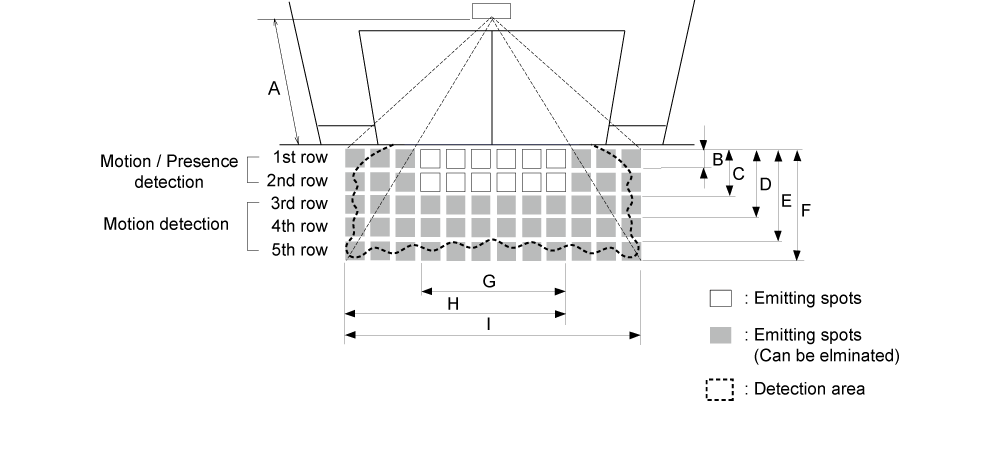OA-AXIS II

OA-AXIS II(S) / OA-AXIS II(BL)
Activation and Safety
- Combination
- Safety
- Motion Detection
- Variety
- Easy Adjustment
The OPTEX OA-AXIS series is the new automatic door standard for use on sliding doors based on the active infrared technique. The OA-AXIS series has been developed as a combination sensor for threshold safety and activation.
Combination
The OPTEX OA-AXIS series is the world’s first door sensor based solely on the active infrared technique, combining activation and safety into one sensor. By using the unique OPTEX presence detection technique, the OA-AXIS series provides maximum safety around the threshold while simultaneously offering a large motion detection area for the door activation.
Safety
The active infrared presence detection of the OA-AXIS series can be set very accurately and can be moved 6° toward or away from the door. The installation of safety beams is no longer mandatory. The sensor detects a person or object and holds the door open for as long as they are in or near the threshold area, even if they stop or pause.
Motion Detection
The large detection area enables rapid detection of any traffic, including trolleys, approaching from any angle. The sensor’s enhanced pattern depth means it can detect people and objects farther away, thus allowing the door to open conveniently for them. The presence and motion detection areas can be adjusted independently.
Variety
By offering different types of output contacts the OA-AXIS series meets the requirements and local standards in many different markets.
OA-AXIS I: 1 relay output for activation and safety
OA-AXIS II: 1 relay for safety and a second relay for motion/activation
Easy Adjustment
Installation time can be minimized using the easily set switches and shutters, meaning the sensor can be quickly adjusted for many different applications. The use of an OPTEX Infrared finder is recommended to adjust the presence detection area.
Detection Area
OA-AXIS I / OA-AXIS II

1st to 3rd rows: +6°
4th and 5th rows: +44°
| Mounting height A | 2200 (7'3'') | 2500 (8'2'') | 2700 (8'10'') | 3000 (9'10'') | 3500 (11'6'') |
|---|---|---|---|---|---|
| B | 140 (6'') | 160 (6'') | 180 (7'') | 200 (8'') | 230 (9'') |
| C | 420 (1'5'') | 480 (1'7'') | 520 (1'8'') | 580 (1'11'') | 670 (2'2'') |
| D | 820 (2'8'') | 930 (3'1'') | 1000 (3'3'') | 1100 (3'7'') | 1300 (4'3'') |
| E | 1350 (4'5'') | 1540 (5'1'') | 1660 (5'5'') | 1850 (6'1'') | 2160 (7'1'') |
| F | 1900 (6'3'') | 2170 (7'1'') | 2340 (7'8'') | 2600 (8'6'') | 3030 (9'11'') |
| G | 1330 (4'4'') | 1510 (4'11'') | 1630 (5'4'') | 1810 (5'11'') | 2110 (6'11'') |
| H | 2050 (6'9'') | 2320 (7'7'') | 2510 (8'3'') | 2790 (9'2'') | 3260 (10'8'') |
| I | 2780 (9'1'') | 3150 (10'4'') | 3400 (11'2'') | 3790 (12'5'') | 4420 (14'6'') |
- The actual detection area may become smaller depending on the ambient light, the color / material of the object or the floor as well as the entry speed of the object.
- The values of the chart above is of the emitting spots, but not of the detection area.
